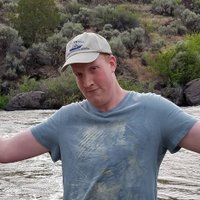
Michael E. Carter, M.A.@DeckofCarter
Apr 5, 2022
16 tweets
The topic of our 3rd thread this #GenocideAwarenessMonth has its roots in the first Thanksgiving in Plymouth in Oct 1621. The feast between the 50 surviving Puritans, Tisquantum/Squanto (the last of the Patuxet), and 90 Wampanoag shifted the nature of the region forever. /1
As the colony was joined by other English settler societies, political/economic tensions boiled over into armed conflict between the settlers as well as their allies and the Pequots. The Pequot War (1636-8) ended as a genocidal conflict which destroyed the Pequots as a people. /2
The 1640s, thanks to the legal authority and the effort of missionaries, brought wider efforts of Christianization and thus emerged the societal phenomenon of the Praying Indians - Christian indigenous people who generally had a unique relationship with the Puritans. /3
One such Praying Indian was named John Sassamon, who fought alongside the English during the Pequot War, and a choice he made altered the history of the region entirely. Sassamon, on word that the leader of the Wampanoag was planning to attack the English, warned his allies. /4
While the warning was handwaved away, the feeling changed when Sassamon was founded with a broken neck in a frozen pond and the evidence pointed to three Wampanoag assassins. They were charged by the courts and a ethnically mixed jury found them guilty. They were then executed /5
The sachem (chief) of a Wampanoag was Metacomet, legally named Philip by the English, and referred to with the title "King", would soon be the commander of an alliance against the English in one of the most destructive wars of the colonial era. /6
I am not going to beat by beat in terms of the conflict but brutal violence inflicted by both sides as well as the fact that the Confederacy of English colonies were fighting without help of the motherland shaped the future of the region. /7
As the war turned against Metacomet in 1676, Cpt Benjamin Church was tasked with hunting him. Captured enemies provided mixed results in the military manhunt but the key to ending the conflict not from a prisoner but one who was disheartened against the chief. /8
It is sometimes lost in popular history that internal Native American politics could be just as damaging to their cause as similar strife among the Europeans. That is the case for Alderman; a common attributed name/surname I believe was an English reference to his advisor role /9
Alderman was counsel to Metacomet up until the point where the sachem allegedly had his brother executed over some sort of disagreement. This murder is what spurred Alderman, a Praying Indian in his own right, to offer his services as an informant and scout to the Englishmen. /10
And so when Church's forces marched on Mount Hope, the historic stronghold of the Wampanoag, he did so with Alderman. And it would be Alderman himself who put a shot through his sachem's heart - driving the death nail into his people and avenging his brother. /11
Metacomet was mutilated, displayed publicly, & parts of his body taken as trophies. His head was on public display for many years. According to folklore, Alderman was able to keep his hand, preserved it in rum, and displayed it at a price. This was his reward for regicide. /12
The war would official end with arrest of Anawan, an older war chief, who showed Church respect and even gifted him Metacomet's own wampum. His age was unknown but anecdotally I have heard the possibility that he may have attended the 1621 feast as a child. /13
Anawan was beheaded as the final major action of the English in the war. Much like the Pequots before them, the Wampanoag were broken as a nation, their territory seized, and many of the surviving captives sold into Caribbean slavery including Metacomet's own wife and son. /14
To this day, a small population of Afro-Indigenous descendents of those sold off post-war still live in Bermuda and they reportedly made contact with New England descendents in 2009. /15
This coming Thursday we will over the next topic: The targeting of the Marsh Arabs by the Ba'athist regime of Iraqi strongman Saddam Hussein. /e

Michael E. Carter, M.A.
@DeckofCarter
Americanist Historian & Genocide Scholar. @KeanHistory Adjunct. #Twitterstorian. Cancer Survivor. He/Him.
Missing some tweets in this thread? Or failed to load images or videos? You can try to .




